REVIEW – You’ll step into the sandals of a young, masterless samurai – a ronin – in Team Ninja’s latest action-adventure saga set in the tumultuous 1800s of Japan. Amidst a backdrop where Western culture clashes with local shogunate politics and rebellious upheavals, you’re tasked with carving a path for yourself through an array of hair-raising, bloody, and at times, hilariously wild adventures. Drawing from a rich palette that includes elements from Ghost of Tsushima, Nioh, Sekiro, and Ubisoft titles, Rise of the Ronin emerges as a true “Renaissance man” of games. The burning question was whether it would find its own identity or drown in a sea of borrowed gameplay elements?
Many criticized Rise of the Ronin’s marketing strategy for being rather vague about what kind of game we were actually getting, and let’s be real: those critiques were on point. The art of marketing a notable game lies in walking the fine line between enticement and oversharing. It’s crucial to provide enough info to whet the audience’s appetite without spilling the beans on all the mysteries. Personally, I believe the media buzz prior did Rise of the Ronin a disservice, not fully showcasing its genuine value.
That’s why it’s vital to highlight that although I had a somewhat generic image of Rise of the Ronin as an open-world action-RPG similar to Ghost of Tsushima and Nioh, that perception wasn’t far off from reality. However, Team Ninja’s latest project hides much more under its armor, boldly claiming the title of the studio’s most ambitious project yet. It serves as a lesson for Western game developers on crafting impressive open worlds.
Set in the Bakumatsu period of the Tokugawa shogunate, the game offers players the choice to embark on a journey as a young swordsman raised by the mysterious assassin organization known as the Veil’s Edge, fanatically aimed at overthrowing the shogunate. A twist of fate separates our protagonist from their sibling, setting off an epic tale of reunion and rebellion. Rise of the Ronin stands out, connecting deeply with historical events while giving creativity free reign, diverging from the studio’s previous myth and folklore-infused fantasies. This fresh direction is a breath of fresh air.
Focusing on historical events could easily become too dry or dull, so it’s commendable that the developers chose to weave in the era’s social and political backdrop, deeply engaging players in the narrative. As with all Team Ninja games, Rise of the Ronin offers complex character creation with extensive customization options. And for those not diving deep into customization, the default male character bears a striking resemblance to the legendary Japanese actor Hideyuki Sanada, offering yet another route to explore.
Character Creation in Rise of the Ronin: What Will You Be When You Grow Up, Samurai?
As you define your hero’s appearance in Rise of the Ronin, you’re given the opportunity to select Origins (classes) that reflect your courage and combat style. Beyond traditional warrior archetypes like the brawn-over-brains brute and the shadow-lurking assassin, a “Spartan” class offers a steep challenge for those who relish it – Rise of the Ronin’s very own Dark Souls-esque “Deprived” class. The “Breaker” Origin, with its focus on stealth, inviting you into the world of sneaky assassinations, truly captivated me, partly because I’ve been missing the Tenchu games something fierce.
Once our character is forged and we step beyond the initial linear intro, Rise of the Ronin gradually reveals its true colors – a process that requires patience and time. At first, the parallels with Ghost of Tsushima are unavoidable: both are third-person, open-world action-RPGs that prioritize exhilarating combat and tell similar tales of Japanese warriors facing foreign threats. However, as we delve deeper, the myriad differences between the two games become apparent.
A key difference lies in visual presentation – and you probably know where I’m going with this. As a Team Ninja creation, certain expectations are set for visual quality. To clear the air, Rise of the Ronin doesn’t boast the visual spectacle of Ghost of Tsushima. It lags not just in the complexity of character models and landscapes but also in some gameplay “clunkiness”: certain animations lack smoothness, abrupt appearance of distant objects, frame rate fluctuations in performance mode, and some distracting jitter during crowded scenes can detract from the experience.
Despite these hitches, Rise of the Ronin has its own merits. While Ghost of Tsushima undeniably offers superior image quality, Rise of the Ronin presents a denser, more populated world. Ghost of Tsushima beautifully depicted the rural landscapes of Tsushima (and later Iki) island, but Rise of the Ronin steps up with bustling urban areas like Yokohama or Edo, not featured in Ghost of Tsushima, enriching the game with exciting locales, villages, and cities.
Don’t get it twisted, Rise of the Ronin often dazzles. Gazing towards Yokohama, seeing long grass sway in the afternoon breeze, ships docking in the harbor, and leaves floating before you, is just one of many stunning visual experiences Rise of the Ronin offers. While occasionally rough around the edges, the game still delivers moments of brilliant visual flair.
Slicing, Gliding, and Grappling: The Art of Movement in Rise of the Ronin
Rise of the Ronin undoubtedly creates distance between itself and Ghost of Tsushima by setting a new standard in the open world’s potential for variety. This diversity is evident not just in the activities available to the player but also in the means of traversing the map. Among the innovations, Rise of the Ronin not only draws inspiration from From Software’s masterpiece, Sekiro: Shadows Die Twice, but also advances further. The protagonist’s grappling hook not only enables access to seemingly unreachable spots but can also be used to throw objects at enemies, stealthily descend upon unsuspecting victims for a silent takedown, or, when sufficiently advanced, even hurl enemies into any obstacle in their path.
Beyond the grappling hook, early access to an improvised glider allows for quickly bridging large distances and overcoming high walls that would otherwise be inaccessible, enabling players to reach an unsuspecting enemy for a swift and satisfying assassination. Alongside the trusty steed, which can be meaningfully upgraded and cosmetically customized at stablemasters, a variety of on-foot movements such as jumping, sprinting, and pace changing contribute to Rise of the Ronin’s exemplary performance in terms of movement freedom, allowing players to seamlessly roam its rich game world.
As for motivation to explore the world, Rise of the Ronin follows tried-and-true patterns seen in other open-world games. Unlike the newer Assassin’s Creed and Far Cry games, or even Ghost of Tsushima, Team Ninja’s new creation stands out primarily because it offers a variety of activities outside the main game, cleverly integrating them into a coherent and thoughtful progression system that encourages players to discover everything the game has to offer.
Rise of the Ronin doesn’t simply place activities on the map by liberating a tower but employs an “unfolding” system, where the more you engage in a region, the more missions and activities become available on the map. This approach ensures that the game’s map doesn’t immediately overwhelm with icons, distracting and exhausting the gameplay experience, but rather, Rise of the Ronin gradually delivers its open-world content, allowing players to explore at their own pace without feeling pressured. This is just one of the many intelligent, experience-enhancing decisions Team Ninja made during the development of Rise of the Ronin, and there’s more to share on this front.
A Kaleidoscope of Side Activities in the World of Rise of the Ronin
Regarding the side quests and supplementary activities Rise of the Ronin offers, I dare say for those who found the repetition of open-world tasks in Ubisoft games a chore or were simply looking for more to do beyond the paths offered by Ghost of Tsushima, there’s plenty to discover and enjoy. From capturing cats to hunting for treasures, practicing with firearms to becoming a master of gliding, photographing dogs to sending shrine dogs to other players, praying at shrines, dojo fighting, gambling, chasing fugitives, eliminating bandit gangs, photographing key landmarks, and finally engaging in dynamic missions that unexpectedly pop up, Rise of the Ronin is teeming with a rich selection of varied activities like few other open-world titles can offer.
Another aspect that makes Rise of the Ronin’s open-world activities stand out is the exploitation of a diverse progression system. Unlike Ghost of Tsushima, where cosmetic upgrades and skill points were the primary incentives for most side activities, here you can not only obtain limited-time items and equipment but also special items that strengthen your relationships with different characters.
A key element of Rise of the Ronin is not just the numerous allies you’ll meet throughout the story, but also how you cultivate those relationships. Naturally, every character has their own strengths and weaknesses, which can be enhanced by strengthening your bond with them. These bonds can be reinforced through actions and dialogue choices that align with the characters’ values, as well as gifts which—you guessed it—can be obtained by completing various side missions. It’s worth noting that each ally has their own series of missions related to their story, not only strengthening your bond but also providing deeper insight into their personalities and pasts.
Ki and the Dance of the Sword: Combat at the Heart of Rise of the Ronin
While I’ve already highlighted that Rise of the Ronin is a Team Ninja creation, setting certain expectations for visual quality, it’s crucial to note that a Team Ninja game also delivers a sophisticated, challenging combat experience. For those familiar with Team Ninja’s Nioh series (and if you haven’t checked it out, you should), the Ki system introduced here will feel familiar. Draining an opponent’s Ki through successive counter-attacks – or “counter-sparks” as they’re called here – not only depletes them but also renders them vulnerable for a brief period, opening up the opportunity for a devastating critical hit. Few things in the gaming world offer as much satisfaction as a well-executed combo that flips the tide of battle.
However, the Ki system’s twist is that it applies not just to enemies, but to you and your allies as well. This means that overly aggressive attacks can leave you exhausted and vulnerable. Beyond the Ki system, a plethora of ranged weapons are available, including guns, bows, handheld explosives, shurikens, firecrackers, and much more, along with a variety of weapon types and combat styles, all customizable and upgradable. If direct confrontation isn’t your jam, you can opt for a Tenchu-style approach, executing assassinations from above, behind, and sometimes even through doors. Distract enemies with thrown pebbles, conceal your escapes with smoke bombs, and employ a variety of other tricks. In short, if you have a personal preference for getting the “dirty work” done, Rise of the Ronin is likely to satisfy it with dynamism and style.
Combat is also notably brutal – almost every lethal encounter ends with limb dismemberments, copious blood splatter, and frequent beheadings, proudly wearing the visceral essence of the 1960s and 1970s samurai films on its sleeve, unbothered by any external opinions. Another important note about Rise of the Ronin’s combat system: while you can play through the entire campaign solo, alongside the allies you meet along the way, including switching between them in battle, you can also invite friends to join and assist with missions.
In other areas, Rise of the Ronin can boast similarities with Nioh and other Souls-like games, which, while not surprising, are cleverly executed. The Veiled Edge flags function similarly to the bonfires in Dark Souls games, not just facilitating fast travel but also allowing you to convert accumulated karma (think souls from From Software games) into development points, which can then be invested into one of four available progression paths.
This Samurai Game Respects My Time
A surprising discovery in the world of Rise of the Ronin was how much it values and conserves the player’s time, through numerous small but thoughtful enhancements that make the gameplay experience faster and smoother. For instance, the option for fast travel, which allows free switching between already unlocked locations without the need to be there physically, meaning it can be activated from anywhere, easing the burden of lengthy return journeys. Other considerate gestures, such as automating the call for your horse, simple gathering of materials with a button press, or skipping intros before a repeat battle, all contribute to preventing the game from feeling like a waste of the player’s time. These might seem like minor details, but in a game as challenging as Rise of the Ronin, especially in the later stages, these refinements really help reduce frustration. Hats off to Team Ninja, masterfully done.
Another significant aspect of Rise of the Ronin is its embedding of the Bakumatsu era, a tumultuous period in Japan when the country grappled with the dilemma of opening up to the Western world, facing conflicts between forces supporting and opposing Western influence. Rise of the Ronin leverages this historical backdrop for its storyline, where the player can navigate between factions supporting and opposing the shogunate, and also encounter smaller groups with more complex motivations. This conflict weaves a more nuanced historical-political narrative than previously seen in Team Ninja creations, directly linking to the game’s surprisingly extensive freedom of choice.
By making decisions that affect the storyline, you can gain new allies or avoid certain characters, further evidence of how deeply the bonding system is embedded in Rise of the Ronin. Ingeniously, as you maneuver through the political storms of the era, you can often switch sides, and the game responds accordingly, with characters questioning your decisions in light of past actions. This is a fantastic addition, which, together with the open world, relationship system, and all other elements, showcases how mature Team Ninja has become as a developer.
The Art of Diversity: A Critical Eye on Rise of the Ronin
Rise of the Ronin is a unique juggling act between genres, where Team Ninja daringly borrows from other titles while constructing its own impressive open world. This game has been one of the year’s biggest surprises for me, especially with how confidently it carries the legacy of open-world game design forward. While the graphics might not always hit the mark, Rise of the Ronin transcends these moments to shine as Team Ninja’s most accessible yet ambitious project to date, captivating a wide audience from hardcore action-RPG fans to enthusiasts of open-world adventures.
-Gergely Herpai (BadSector)-
Pros:
+ Stunning open world design that confidently competes with the best in the genre
+ Innovative combat system that is challenging and satisfying
+ Deep storytelling and character relationships that enrich the gaming experience
Cons:
– Sometimes rough visual display
– Sometimes takes too much inspiration from other games, which can result in a lack of originality
– Perhaps too accessible for hardcore action RPG fans
Publisher: Koei Tecmo
Developer: Team Ninja
Style: Action RPG, Open World
Release: March 22, 2024.
Rise of the Ronin
Gameplay - 8.6
Graphics - 7.5
Story - 8.5
Music/Audio - 8
Ambience - 8.8
8.3
EXCELLENT
Rise of the Ronin stands as Team Ninja's most ambitious project yet, an impressive open-world action-RPG teeming with challenges and deep narrative engagement. While inspirations from various games are noticeable, they don't detract from the game's unique atmosphere and innovative mechanics. Thus, Rise of the Ronin is recommended for genre veterans and newcomers alike, offering a rich and complex world for players to explore.

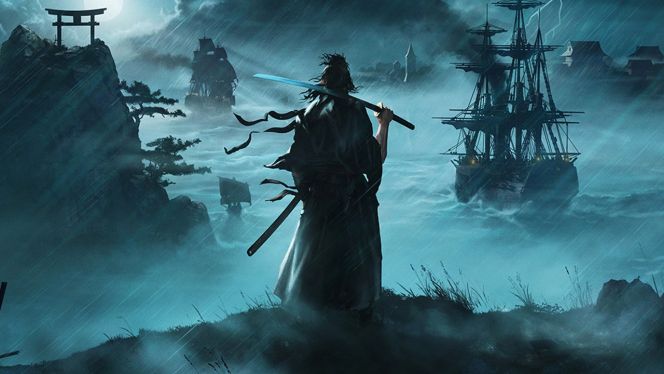
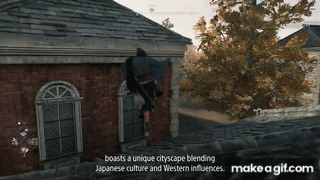

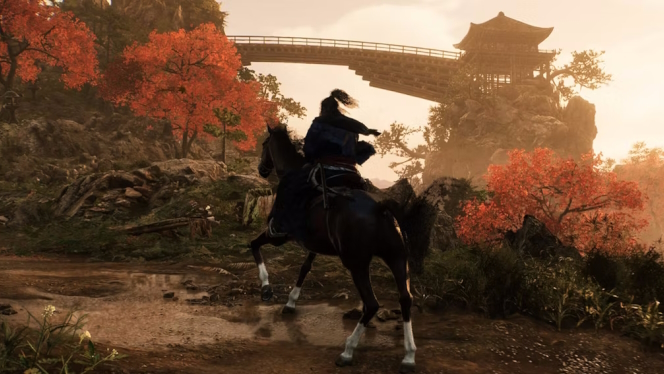

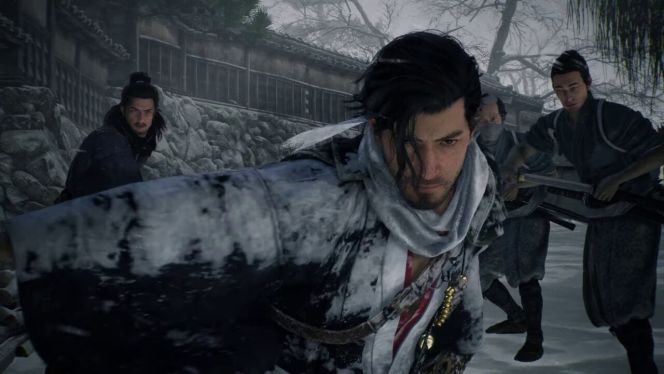

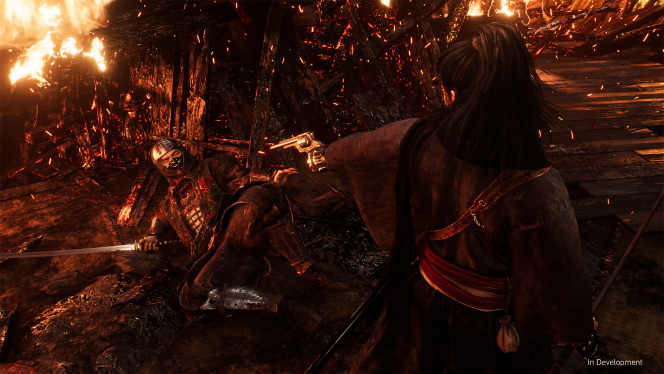






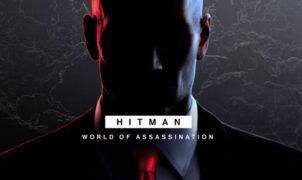







Leave a Reply